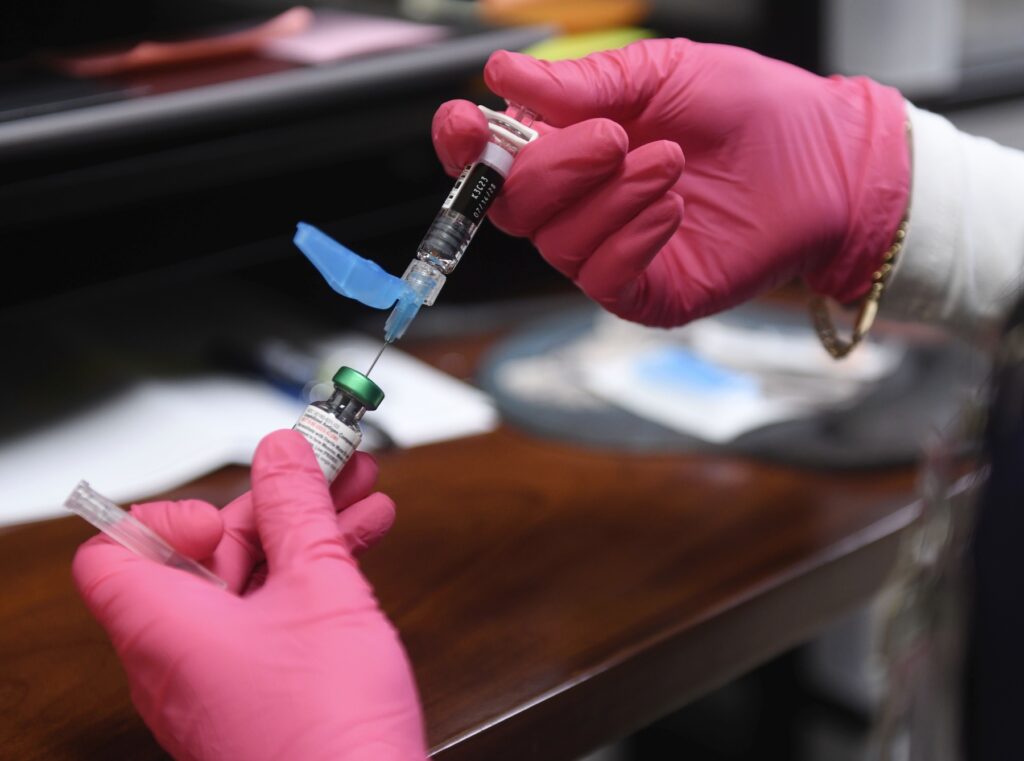
Texas confirmed eight more measles cases over the span of four days, continuing a short streak of shrinking increases in a state that has been dealing with a large outbreak for nearly four months.
The U.S. surpassed 1,000 measles cases Friday, and Texas still accounts for the vast majority of cases in an outbreak that also spread measles to New Mexico, Oklahoma and Kansas.Two unvaccinated elementary school-aged children died from measles-related illnesses in the epicenter in West Texas, and an adult in New Mexico who was not vaccinated died of a measles-related illness.
Other states with active outbreaks — which the CDC defines as three or more related cases — include Indiana, Michigan, Montana, North Dakota, Ohio, Pennsylvania and Tennessee.
North America has two other ongoing outbreaks, all of which are the same measles strain. One outbreak in Ontario, Canada, has resulted in 1,440 cases from mid-October through May 6, up 197 cases in a week. And the Mexican state of Chihuahua had 1,094 measles cases and one death as of Tuesday, according to data from the state health ministry.
Measles is caused by a highly contagious virus that’s airborne and spreads easily when an infected person breathes, sneezes or coughs. It is preventable through vaccines, and has been considered eliminated from the U.S. since 2000.
As the virus takes hold in U.S. communities with low vaccination rates, health experts fear that spread could stretch on for a year. Here’s what else you need to know about measles in the U.S.
How many cases are there in Tennessee?
Tennessee had six measles cases as of early May. Health department spokesman Bill Christian said all cases are the middle part of the state, and that “at least three of these cases are linked to each other” but declined to specify further. The state also did not say whether the cases were linked to other outbreaks or when Tennessee’s outbreak started.
What do you need to know about the MMR vaccine?
The best way to avoid measles is to get the measles, mumps and rubella vaccine. The first shot is recommended for children between 12 and 15 months old and the second between 4 and 6 years old.
Getting another MMR shot as an adult is harmless if there are concerns about waning immunity, the CDC says. People who have documentation of receiving a live measles vaccine in the 1960s don’t need to be revaccinated, but people who were immunized before 1968 with an ineffective vaccine made from “killed” virus should be revaccinated with at least one dose, the agency said.
People who have documentation that they had measles are immune, and those born before 1957 generally don’t need the shots because so many children got measles back then that they have “presumptive immunity.”
Measles has a harder time spreading through communities with high vaccination rates — above 95% — due to “herd immunity.” But childhood vaccination rates have declined nationwide since the pandemic and more parents are claiming religious or personal conscience waivers to exempt their kids from required shots.
What are the symptoms of measles?
Measles first infects the respiratory tract, then spreads throughout the body, causing a high fever, runny nose, cough, red, watery eyes and a rash.
The rash generally appears three to five days after the first symptoms, beginning as flat red spots on the face and then spreading downward to the neck, trunk, arms, legs and feet. When the rash appears, the fever may spike over 104 degrees Fahrenheit, according to the CDC.
Most kids will recover from measles, but infection can lead to dangerous complications such as pneumonia, blindness, brain swelling and death.
How can you treat measles?
There’s no specific treatment for measles, so doctors generally try to alleviate symptoms, prevent complications and keep patients comfortable.

